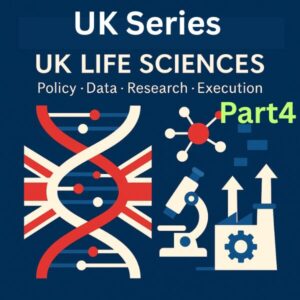Category: Pharma & Biotech NEWS | Series “Reading 2025 Layoffs” — Part 1
Key Takeaways
- Selectivity & Focus: Layoffs reflect a disciplined reallocation—shifting resources toward late-stage/validated assets while compressing broad early exploration.
- Structural Cost Burden: In cell/gene modalities, manufacturing, quality, and regulatory complexity remain primary drivers of headcount optimization.
- Ongoing Reallocation: Big Pharma cuts costs and reinvests in priority areas; startups/mid-caps extend runway and concentrate pipelines to hit the next value inflection (POC/partnering).
Purpose & Scope
This series synthesizes 2025 North American biotech/pharma layoffs through three lenses—disease areas, modalities, and capital markets. Part 1 provides the “map” to navigate the rest: disease-by-disease, modality-by-modality, and finally the funding climate and practical playbooks.
How to Read the Data (Sources, Definitions, Bias)
- Coverage: 2025 announcements/reports on workforce optimization (including hiring freezes or site consolidations).
- Definition: “Layoffs” here broadly include post-merger overlaps and functional reallocations.
- Caveats: Disclosure styles differ; some figures or departmental details remain uncertain.
2025 Snapshot
Three overlapping waves help explain the year:
- Wave 1: Runway & cash discipline — early-stage companies halt non-core assets and consolidate G&A to extend cash.
- Wave 2: Pipeline outcome–driven — P2/P3 readouts and regulatory feedback trigger sharp refocus on “winners.”
- Wave 3: Integration & relocation — M&A and global restructuring move manufacturing/medical/MA to optimal geographies.
Across waves, the common theme is redefining capital efficiency: not just cutting costs, but shortening the path to POC and revenue with deliberate resource reallocation.
Patterns by Company Size
Startups to Mid-caps
- Runway extension: clarifying what not to do, aligning cash with milestones.
- De-prioritization: shelving broad platform exploration; pursuing JV/licensing for non-core assets.
- Functional redesign: re-drawing insource/outsource boundaries in manufacturing, data science, and medical.
Big Pharma
- Reallocation: shifting headcount and capex toward late-stage and near-commercial programs.
- Geo-optimization: manufacturing/quality/supply sites moved for tax, talent, and demand proximity.
- Portfolio transition: spinouts, co-development, and commercialization-rights retooling for non-core assets.
Why It Happened: Five Drivers
- Rates & public-market tone: episodic IPO/FPO windows; tighter valuation math; harder bridging finance.
- Late-stage cost load: cell/gene programs consume cash given manufacturing/quality/regulatory complexity.
- Data events: P2/P3 (or safety) outcomes immediately reshape portfolio allocation and headcount.
- M&A integration: overlap elimination and role redefinition post-acquisition.
- Portfolio tectonics: post-COVID mRNA optimization; platform work shifting from breadth to depth (AI discovery, degraders, etc.).
2025’s Keyword: Selectivity
Investors skew toward POC and near-commercial assets. Platform-heavy, exploratory programs need fast POC, credible CMC, and clear reimbursement logic to secure bridge capital.
| Stage | Financing Reality | Survival Conditions |
|---|---|---|
| Discovery–Preclinical | Tighter screening for new money | Prioritized indications; a visible path to POC; external funding options |
| Phase 1–2 | Bridge via debt/BD | Early efficacy signals; robust CMC & dose rationale; real-world value story |
| Phase 3–Pre-filing | Partners/co-promo/territorial rights | Commercial readiness; pricing/reimbursement outlook; supply reliability |
Quick Glossary
- Runway: months of operations supported by current cash.
- POC: clinical proof of concept; a key value inflection.
- CMC: chemistry, manufacturing & controls—manufacturing/quality requirements.
- Bridge financing: non-dilutive/dilutive capital to reach the next milestone.
How to Read the Rest of the Series
- Part 2: Reshaping by disease areas (oncology, neuroscience, immunology, metabolism, ophthalmology).
- Part 3: Modality-by-modality playbook (cell/gene, RNA, degraders, etc.).
- Part 4: Funding climate (VC/public/debt/M&A) and deal mechanics.
- Part 5: Practical playbooks (founders/investors checklists & capital strategy).
Conclusion: Looking into 2026
2025 workforce actions point to reallocation, not retreat. Into 2026, the winners will pair (1) designs that deliver fast POC, (2) realistic CMC/supply strategies, and (3) persuasive pricing & reimbursement narratives. Next, we will deep-dive disease-area tectonics with concrete examples.
Next up: “Part 2 | Reshaping by Disease Areas: From Oncology to Neuroscience.”
This article was edited by the Morningglorysciences team.










Comments